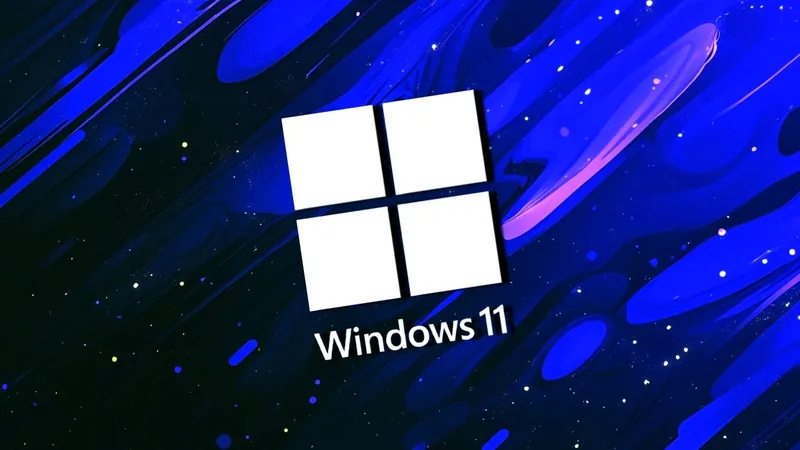
The Zofran Dilemma: Why Can't This Nausea Miracle Be Over-the-Counter?
2025-05-13
Author: Wei
The Zofran Phenomenon: A Drug Everyone Seems to Love
Mention the anti-nausea medication Zofran in conversation, and you’ll quickly discover it’s a household name with countless fans. From pregnant women finding relief from morning sickness to those battling migraines, many have a personal story about this miraculous drug. One friend swears by it to combat a severe bout of norovirus, while another calls it her child's 'magic pill' for car sickness. It's no wonder people treasure their prescriptions like gold.
Understanding Zofran: How It Works
Zofran, or ondansetron, has earned its stripes since its FDA approval in 1991. It's primarily used to alleviate nausea from chemotherapy and surgery, quickly tackling queasiness in as little as thirty minutes. But its prowess isn't limited to these applications; it's also a savior for those grappling with stomach viruses or chronic conditions like Crohn's disease. Zofran allows users to avoid harsher medications and enjoy a life free from debilitating nausea.
The Prescription Dilemma
So, if Zofran is so effective and generally well-tolerated, why is it still prescription-only? The answer is not as simple as one might think. For many doctors, the concern lies in the potential side effects, notably the risk of QT prolongation—a serious heart condition that can lead to life-threatening arrhythmias. This caution is further amplified by potential interactions with other medications, especially for patients taking multiple drugs for various ailments.
Navigating the Risks and Benefits
Doctors warn that masking nausea with medications like Zofran can obscure underlying health issues that require attention. Some argue that making Zofran available over-the-counter could lead to misuse or a lack of necessary medical intervention.
A Different Perspective: Voices for Accessibility
However, not everyone agrees with this cautious stance. Experts like Dr. Marlena Fejzo advocate for broader access to Zofran, particularly for women suffering from Hyperemesis Gravidarum (HG) during pregnancy—a condition often downplayed by healthcare providers. Dr. Fejzo argues that letting patients assess the benefits versus risks can lead to better health outcomes.
Institutional Obstacles and Skepticism
The reluctance to prescribe Zofran often stems not only from fear of adverse effects but also from long-standing biases in medical practice. Women experiencing HG are sometimes dismissed, leading to preventable hardships. Advocates for women's health suggest this paternalistic approach must be challenged.
Is The Risk Justifiable?
Critics of Zofran's prescription-only status argue that its risks are comparable to many over-the-counter medications. With clear guidelines, it's feasible to manage potential side effects while making the drug accessible to those in need. Dr. Nicholas Ghionni points out that much of the fear around Zofran comes from outdated practices and dogma rather than evidence-based assessment.
The Case for Change
It's evident that many people would benefit from having Zofran readily available, especially when considering the prevalence of nausea in everyday life. The idea of stocking it alongside other OTC medications raises intriguing questions about medical access, patients' rights, and changing societal norms.
Conclusion: A Call for Reevaluation
The debate surrounding Zofran’s availability exposes larger issues regarding patient autonomy and medical regulation. While safety concerns should always be paramount, reimagining how medications like Zofran are accessed could transform the lives of countless individuals. The path forward may require a blend of responsible prescribing practices and a willingness to challenge existing norms.


 Brasil (PT)
Brasil (PT)
 Canada (EN)
Canada (EN)
 Chile (ES)
Chile (ES)
 Česko (CS)
Česko (CS)
 대한민국 (KO)
대한민국 (KO)
 España (ES)
España (ES)
 France (FR)
France (FR)
 Hong Kong (EN)
Hong Kong (EN)
 Italia (IT)
Italia (IT)
 日本 (JA)
日本 (JA)
 Magyarország (HU)
Magyarország (HU)
 Norge (NO)
Norge (NO)
 Polska (PL)
Polska (PL)
 Schweiz (DE)
Schweiz (DE)
 Singapore (EN)
Singapore (EN)
 Sverige (SV)
Sverige (SV)
 Suomi (FI)
Suomi (FI)
 Türkiye (TR)
Türkiye (TR)
 الإمارات العربية المتحدة (AR)
الإمارات العربية المتحدة (AR)